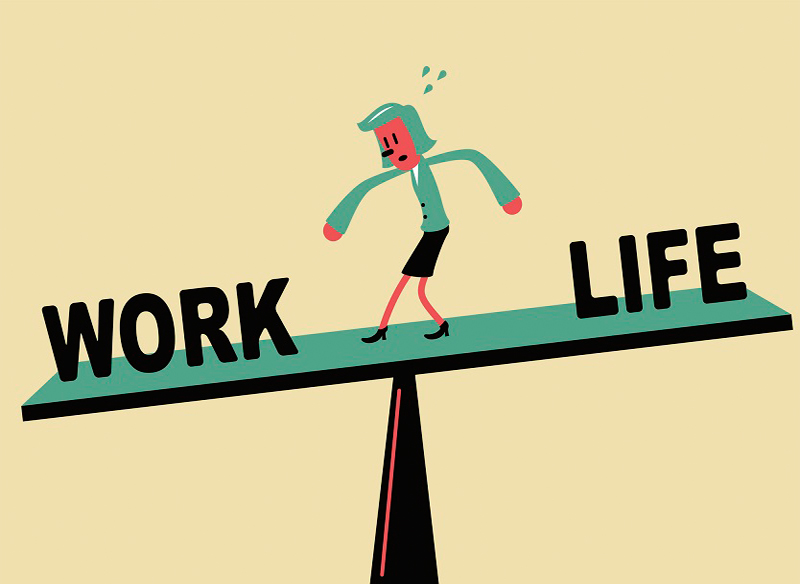There is no such thing as work-life balance- it is all life. The balance has to be within you.
Young workers are more so taking on side gigs in hopes of advancing professionally. Experts do offer some tips for managing them. As workplaces are becoming increasingly competitive due to changing career expectations, it is not uncommon for professionals to clock out of one job at the end of a workday and then clock right back into the next one.
The “side gig” has become even more prevalent in recent years as job mobility heads a steady decline. In recent years companies have seen their budgets stretched in ways that make it harder to train employees for the future! This has even caused younger workers to feel more impatient about broadening their own resume in hopes of eventually landing up in higher-level positions.
In the past, workers expected that after getting a job they would be groomed for the next higher up position through training. But that is no longer as common. In the last 20 years, the concept of sticking with one company for a career has more or less eroded. More than ever before, people are undertaking second jobs and entrepreneurial pursuits in hopes of bolstering their resume, chasing passions, or just for making some extra cash!
Do Know When to Start
So what do workers need to keep in mind when launching a second job? When starting out, it is often hard to get people to take your side gig seriously and sometimes that is for a good reason.
It is common for people to start side gig projects without actually finishing them. Until you have mastered the art of completing projects, the same does discourage workers from getting involved in too many side gigs! Instead, do work to complete any new undertakings. Experience will indeed give you the very reputation you need for people to view your side gig as a legitimate pursuit rather than a just a hobby.
A considerable amount of time establishing the main career before expanding into other areas such as consulting and podcasts, which helps one in been taken more seriously in the long run. So establishing your expertise! That is the really critical piece here; it is having the basis to work from and that reputation to work from as well!
Making it Count For Sure
When choosing a side gig, it is always a good idea to pick something that supports your career and more so long-term goals, whether it is building a new skill or in engaging in an artistic pursuit.
Even if your primary motivation for taking on a side gig is just money, still there are often lots of different ways of making that kind of money. So, engaging in something that has an extra benefit for your career is totally worthwhile.
As working extra hours can mean that people no longer engage in other opportunities such as hobbies or even pastimes that might make them feel well-rounded. It is recommended picking a side gig you are going to totally enjoy. You have soaked up a lot of your available time to do other things! So you do not want to end up in a situation where you feel like everything you are doing is a chore.
Avoiding a very ‘Sticky Situation’
It is called a hustle or a jolt. Sometimes mixing two jobs can lead workers into a legal gray area. Because of this, it is indeed a good idea to let your boss know if you are taking on other endeavours.
Please do understand that when you begin working for a company, you become the intellectual property of the people who hire you. Because of this, it is indeed important to make sure you are not using information or strategies from one job towards another one!
You do not have to use your present job materials for your second job. You do not have to leave your job and take an intellectual property with you to start a second job.
It is very important not to let your side hustle affect your performance at work! From a management point of view, it can be quite obvious when an employee is paying very less attention to their work because of outside endeavours. Sometimes you can almost feel when people are pulling away and going forward to do something else.
You never feel truly satisfied by work until you are truly satisfied by life.- Heather Schuck
Finding the Right Balance is crucial
Examining your current work schedule thoroughly can help you figure out how to fit another job into your life.
The fact is, most people engage in a fair amount of ‘fake work,’ where they sit at their desk without actually doing anything productive at it! When people want to figure out, ‘How much time can I spend on my side gig?’ The first thing that they should do is figure out how much time they are really spending on their main gig!
Taking note of unproductive time at work and then strategically replacing that time with work on a side gig can help improve productivity for both the jobs and maximize the available time. One will actually end up being energized for both in ways that do not harm their productivity for the main gig and will also allow them to get what they want out of that side gig too!
Plan Ahead in order to Succeed
To offset burnout and cope with added stress, states that it is important to have a plan for the future! Setting up a personal deadline for either leaving your primary job or abandoning your side gig is absolutely necessary! There has to be a period of time after which you feel like you have actually succeeded in getting to the position that you wanted to be in.
The key is not to prioritise what’s on your schedule, but to schedule your priorities.- Stephen Covey


